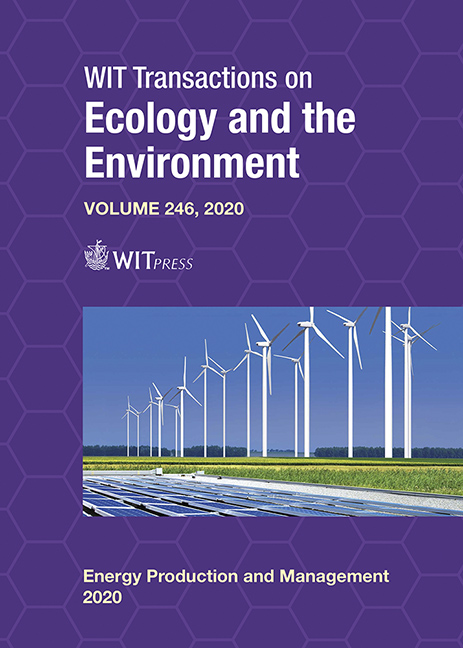PYROLYSIS OF PLASTIC WASTE TO ENVIRONMENTALLY FRIENDLY PRODUCTS
Price
Free (open access)
Transaction
Volume
246
Pages
14
Page Range
61 - 74
Published
2020
Paper DOI
10.2495/EPM200071
Copyright
WIT Press
Author(s)
UMESH PANDEY, JAN ARILD STORMYR, ALIREZA HASSANI, RAJAN JAISWAL, HILDEGUNN H. HAUGEN, BRITT M. E. MOLDESTAD
Abstract
Pyrolysis of plastics is one of the efficient ways to recover plastic waste. Pyrolysis refers to a thermal degradation of long-chain organic molecules into smaller hydrocarbons. Many ongoing research studies are trying to gain a better understanding of the pyrolysis technology with the aim of establishing new industrial processes for plastic recycling. The pyrolysis process can thermally degrade plastics or a mixture of biomass and plastics (co-pyrolysis) in the absence of oxygen. Temperature has the most impact on pyrolysis. Other processes to use in the conversion of plastic wastes into valuable products, are steam cracking and gasification. The objective of this study is to find the best operation conditions for conversion of plastic wastes in a fluidized bed reactor. A comprehensive literature study, experimental tests and computational particle fluid dynamics (CPFD) simulations are performed. A fluidized bed reactor is one of the most promising reactors for conversion of plastics in a continuous process. Experimental tests were performed to investigate the optimal operational conditions for conversion of plastics in a bubbling fluidized bed reactor. Steam was used as the fluidizing agent and sand as the bed material. From literature, it was found that the best temperature to avoid liquefaction in the reactor is 600°C or higher. The minimum fluidization velocities for steam at 600°C was found to be 0.18 m/s. CPFD simulations were performed and the computational result agreed well with the experimental data regarding minimum fluidization velocity. The CFPD model was further used to study the conversion of biomass to a product gas. The product gas contained 22% CO, 7.5% H2 and 7% CH4. Based on the literature review, the experimental results and the simulations, this study recommends investigation of conversion of plastics and biomass in a bubbling fluidized bed reactor. The study concludes that thermal co-pyrolysis or co-gasification of biomass and plastics at temperatures above 600°C using sand as the bed material and steam as the fluidizing gas give reliable operating conditions for the future studies. A proper biomass to plastics ratio should be used to avoid melting of plastics in the feeding system and in the reactor. It is crucial to operate the reactor well above the minimum fluidization velocity, to avoid defluidization.
Keywords
plastic wastes, pyrolysis, catalysts, co-pyrolysis





